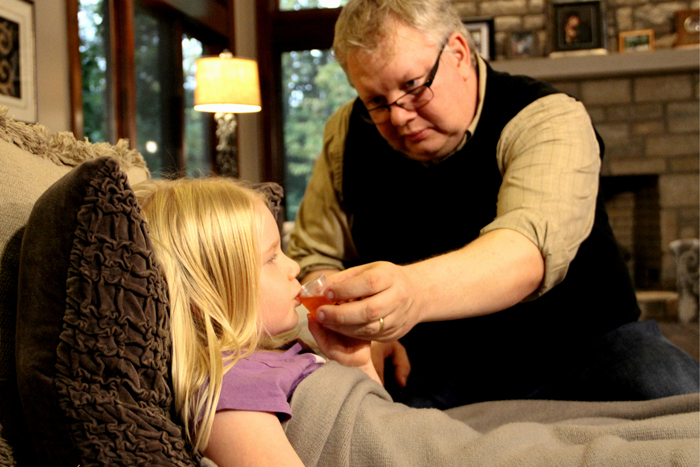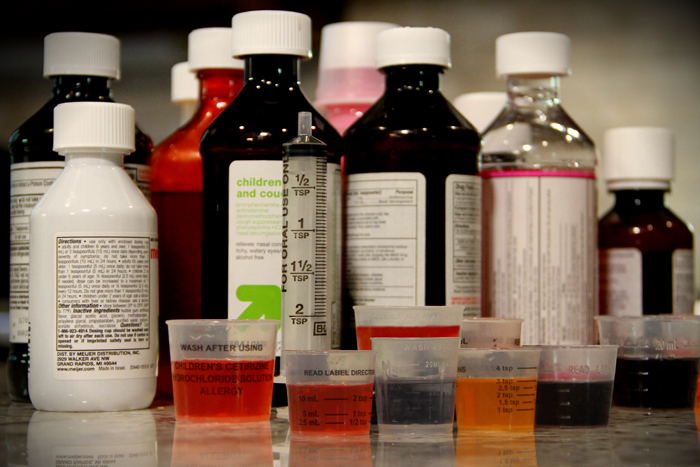
Parents' Medication Mistakes Put Our Kids at Risk (Op-Ed)
Henry Spiller is director of the Central Ohio Poison Center at Nationwide Children's Hospital. He contributed this article to Live Science's Expert Voices: Op Eds & Insights.
Every eight minutes, a well-meaning parent or caregiver unintentionally commits a medication error, affecting a child. In fact, according to our team of researchers and physicians at Nationwide Children's Hospital, every year for the period between 2002 and 2012, 63,000 children under the age of 6 experienced medication errors in places other than a hospital. While parents and caregivers will do whatever it takes to make a sick child feel better, our new study shows that a surprising number inadvertently make matters worse.
The results of our study showed the most common mistakes in children younger than 6-years old occur in the child's home, in another residence, or at school or daycare. Instances in which these mistakes can occur include caregivers giving one child the same medication twice, misreading dosing instructions or administering the wrong medication.

Busy parents, double doses
It's an easy mistake for two busy parents or caregivers to make: giving one child a double dose of medicine. And it is often an error made with the best of intentions. One parent or caregiver will give a child medicine and then move on with his or her busy day without telling the other parent or caregiver. Since the second person doesn't know that medicine was already administered to the child, they also give a dose of medicine, essentially double-dosing the child. The most common medicines involved in this type of situation are painkillers and fever reducers like ibuprofen and acetaminophen .
Our research team found that double-dose errors were most likely to occur among children younger than a year old. Parents with children in this young age group sometimes aren't familiar with the medications they're giving their kids. Whether these are new parents or it's a family getting used to caring for an additional child, they can be hurried or easily distracted when administering the medicine, which often leads to mistakes.
In our study, such errors peaked during winter months. This is most likely attributable to the increased use of medications to treat viral illnesses among young children in the winter months. However, in the later years of the study, from 2005-2012, both the frequency and rate of errors involving cough and cold medications significantly decreased. The combined actions of the U.S. Food and Drug Administration (FDA), manufacturers and the American Academy of Pediatrics recommendation against the routine use of cough and cold preparations among young children (based on the lack of evidence of effectiveness and the common occurrence of side effects) is likely the reason for this decrease.
Sign up for the Live Science daily newsletter now
Get the world’s most fascinating discoveries delivered straight to your inbox.
The number and rate of medication errors most often occurred in younger children, but some of the medication categories looked at in our study demonstrated increased frequency of errors with increasing child age, including antidepressants, sedatives/hypnotics/antipsychotics, and stimulants. This is likely because older children are more likely to be prescribed these types of medications.
The proof is in the packaging
Part of the problem revolves around the packaging of medications. Some medications have syringes, while others have cups. Some dosages are given in teaspoons, while others use millimeters. This can all be confusing to caregivers, and instructions can be difficult to read. [Most Medications for Kids Have Inaccurate Dosing ]

That's why it's so important for drug makers to redesign product packages to provide accurate dosing devices and instructions, and increase the visibility of labels. The U.S. Centers for Disease Control and Prevention (CDC) is working with industry experts and researchers to move these reforms forward. The agency is attempting to standardize measurements for liquid medication to millimeters instead of teaspoons or tablespoons, and to have drug makers place zeros before decimal points on dosage labels. While this effort helps, mistakes are sometimes still inevitable.
What can caregivers do?
Caregivers can do their best to avoid these errors by practicing clear communication through the following three steps:
- When caregivers give their child a dose of medicine, it's important to alert others.
- If a child is going to daycare, the caregiver should write down the time the child received the first dose of medicine. That way, the daycare center will know when the child needs the next dose.
- Use the measuring cup or syringe that comes packaged with the medicine.
Even well-intentioned parents and other caregivers make mistakes, so if you discover an error is made, call your local poison center for help. The national number for every poison center across the United States is 1-800-222-1222.

The statistics on medication errors only account for instances reported to national poison centers, so our study still underestimates the true magnitude of the problem. Ours is the first-known comprehensive national study of its kind, conducted by researchers at the Center for Injury Research and Policy and the Central Ohio Poison Center, both at Nationwide Children's Hospital, and The Ohio State University College of Medicine. (Data came from the National Poison Database System, the most accurate and comprehensive database available for investigation of pediatric out-of-hospital medication errors in the United States.)
Our hope is that spreading the news of these common mistakes will help foster awareness and lead to improvements in these statistics. With some adjustments, there are simple ways to prevent these errors and protect children from harm in the future.
Follow all of the Expert Voices issues and debates — and become part of the discussion — on Facebook, Twitter Google+. The views expressed are those of the author and do not necessarily reflect the views of the publisher. This version of the article was originally published on Live Science.









